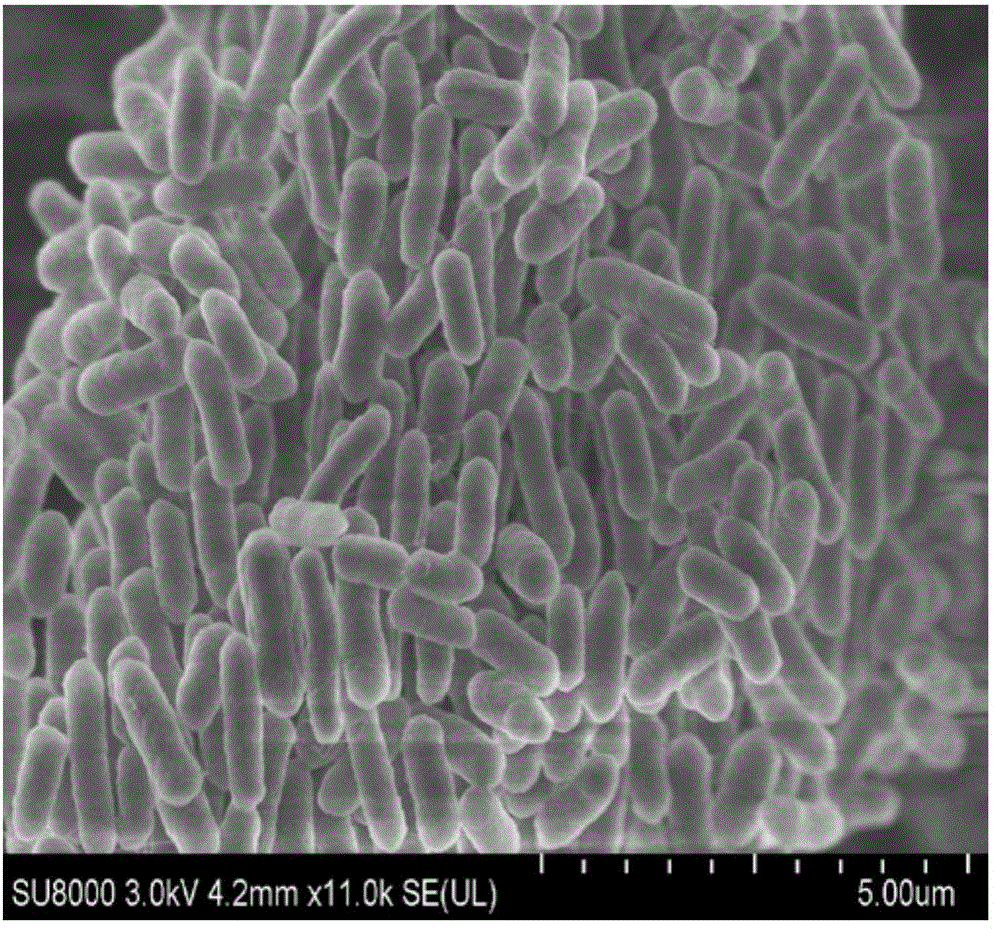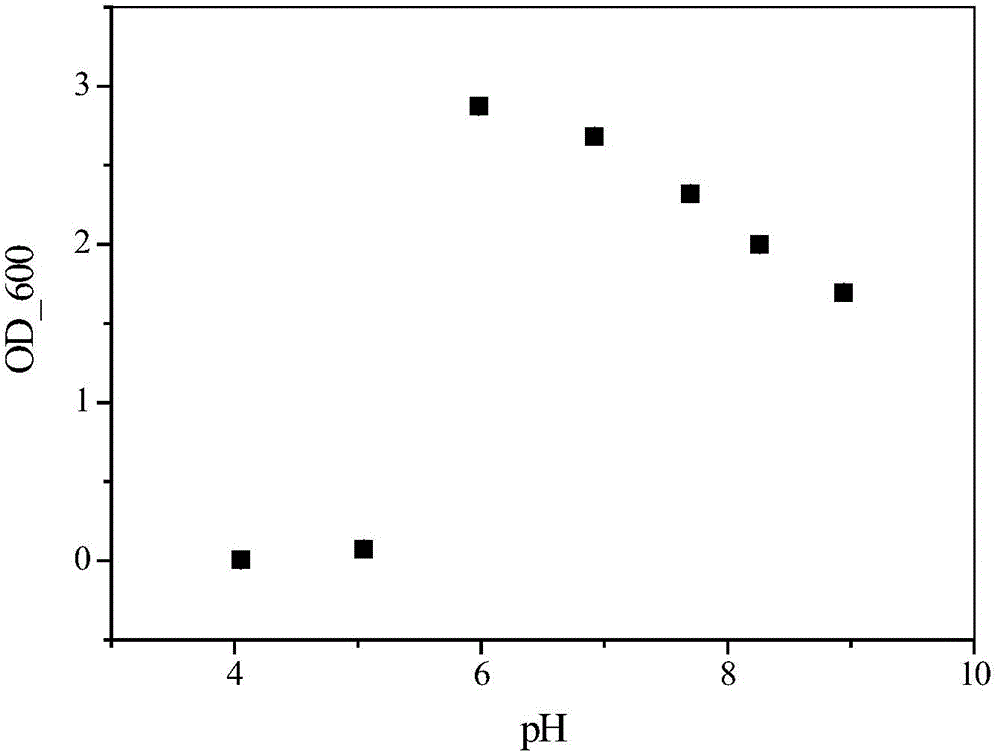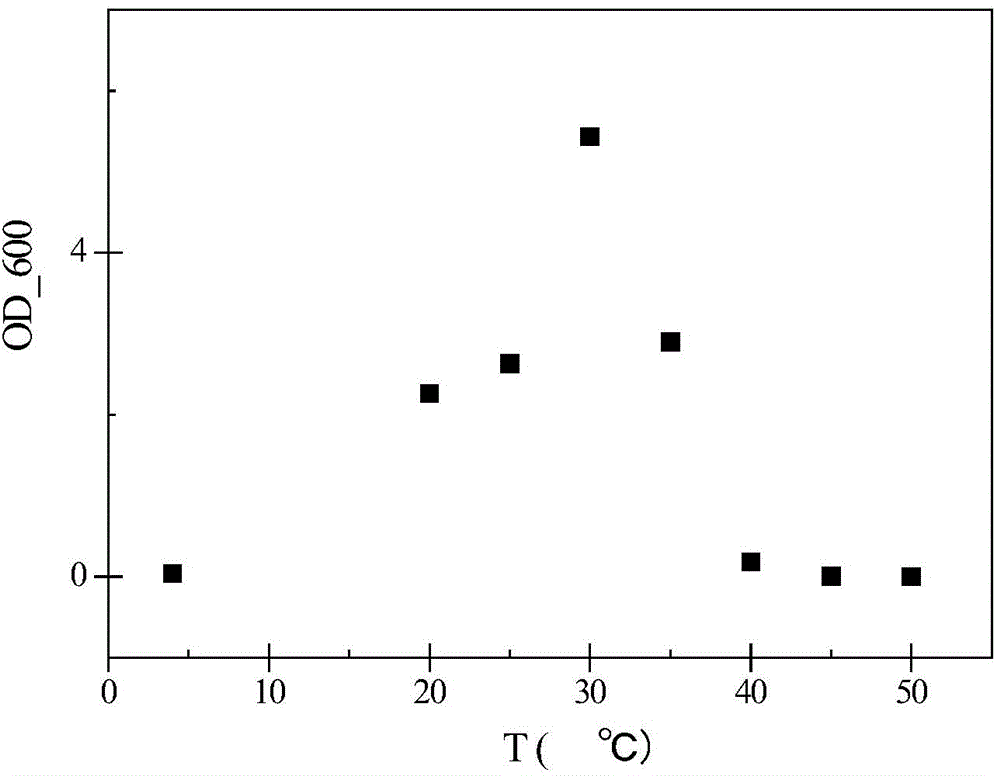Microorganism aerobiotically reducing arsenic high-effectively
A high-efficiency, pentavalent arsenic technology, applied in the field of microorganisms, to achieve the effect of deepening and broadening understanding
- Summary
- Abstract
- Description
- Claims
- Application Information
AI Technical Summary
Problems solved by technology
Method used
Image
Examples
Embodiment 1
[0021] Example 1 Isolation of high-efficiency aerobic arsenic-reducing bacteria: the present invention uses trypsin, yeast, glucose compound medium (TYEG) to isolate aerobic arsenic-reducing bacterial strains. Take 1g and 20mL of soil samples from areas with high arsenic pollution containing 5mmol L-1 or 10mmol L -1 Add TYEG medium (pH 7.0) of trisodium arsenate into a 50mL Erlenmeyer flask, place the Erlenmeyer flask in a constant temperature shaking incubator, and incubate at 28°C for 48 hours with shaking (150rpm).
[0022] Isolation and purification of the aerobic arsenic-reducing strains were performed using conventional microbial methods. Every 24 hours, take 1 mL of the aforementioned culture solution and transfer it into the sterilized liquid medium of the same concentration. Repeat this operation twice, take out 1mL of the culture solution, and use fresh TYEG medium to make a concentration gradient dilution to 10-6, and use the method of flat plate coating to evenly ...
Embodiment 2
[0026] Example 2 Study on the arsenic reduction characteristics of highly efficient aerobic arsenic reducing bacteria: the minimum growth inhibitory concentration (MIC) is used to characterize the arsenic resistance of the bacteria. The minimum growth inhibitory concentration (MIC) is defined as the minimum concentration of trivalent arsenic or pentavalent arsenic that inhibits the growth of bacteria after 48 hours of culture. Prepare 0-80mmol L -1 As(III) (NaAsO2) and 0-300mmol L -1 As(V) (NaAsO 4 ) TYEG liquid medium, inoculated with the same concentration of bacterial liquid, cultured at 30°C with constant temperature shaking (150rpm) for 48h, and measured OD 600 value.
[0027] Research on the reducing characteristics of bacteria: under aerobic conditions, use 1mmol L -1 As(V) TYEG liquid medium, inoculated with the target strain, cultured at 30°C with constant temperature shaking (150rpm). Every 2-4 hours, take a sample of the suspension and pass it through a 0.22 μm...
PUM
 Login to View More
Login to View More Abstract
Description
Claims
Application Information
 Login to View More
Login to View More - R&D
- Intellectual Property
- Life Sciences
- Materials
- Tech Scout
- Unparalleled Data Quality
- Higher Quality Content
- 60% Fewer Hallucinations
Browse by: Latest US Patents, China's latest patents, Technical Efficacy Thesaurus, Application Domain, Technology Topic, Popular Technical Reports.
© 2025 PatSnap. All rights reserved.Legal|Privacy policy|Modern Slavery Act Transparency Statement|Sitemap|About US| Contact US: help@patsnap.com



